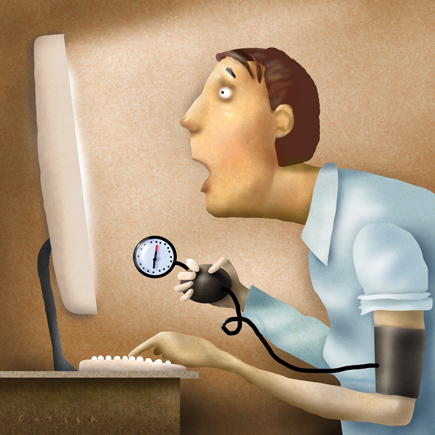E-mailing with patients can improve patient-centered care
Technological advances are also patient communication and satisfaction measures, helping people arrange appointments, review test results and receive medical advice.
This column is the fourth in our series “The Patient's Voice,” developed with the National Partnership for Women & Families.
As a researcher and consumer advocate, I have been encouraged by the increasing use of health technology by both clinicians and patients. As a patient, I have been particularly pleased with the ability to access my medical records online and e-mail my doctors. I feel that the larger number of physician offices offering these services demonstrates more respect for patients and makes the concept of “patient engagement” more of a reality.
Apparently, I am not alone. A June 2012 survey by the Optum Institute found that 60% of patients want e-mail contact with their physicians. Women used e-mail more often than men, but 60% of all people over 65 wanted e-mail health appointment reminders and more interaction with their clinicians.
Federal promotion of electronic medical records has had an impact, and the increase in e-mail use can be partly attributed to financial incentives associated with the meaningful use regulations that require secure messaging by 5% of patients starting in 2014.
At a theoretical level, at least, it seems like e-mail between all patients and their physicians is no longer an “if” but a “when.” When will all patients who want this type of communication be able to use it? What is holding back e-mail communication between patients and physicians? Perhaps my own experience can help explain it.
Although I live in northern California within driving distance of the world's best high-tech companies, my family has until recently lived in 2 worlds of electronic medical communication.
My husband goes to what could be considered a more old-fashioned practice because that's where his preferred doctor works. Until a few weeks ago, he could not e-mail for appointments, test results or medical advice. He had to call a central phone number, push a number of prompts, wait (sometimes several minutes) and often be put on hold. When he had blood tests, he would wait more than a week to get results by regular mail.
My husband's medical group entered the electronic age this month, with what seemed to be little fanfare. New electronic services did not appear to be advertised unless patients asked about them specifically. Time will tell how physicians and staff respond, but I have no doubt that many patients will find the new options convenient and helpful.
The practice to which I belong, a Sutter Health-affiliated Palo Alto Medical Foundation (PAMF), uses a technology platform called EPIC (50% of patients in the U.S. have an EPIC medical record somewhere). All of my physicians have e-mail, and I have been using e-mail to ask for clarification of test results, to get advice about medication and simply to update my physician about an ongoing medical concern for several years.
I also use PAMF's portal to request appointments, renew prescriptions and view test results (which are often in my inbox by the time I come home from the lab). The e-mail program is free to me, and my clinicians' response time is nothing short of amazing.
I understand that there are real barriers to the use of e-mail with patients. According to Albert Chan, MD, chief medical information officer of Palo Alto Foundation Medical Group and medical director of My Health Online for Sutter Health, adoption of Internet access has varied among the PAMF-affiliated medical groups in northern California. When e-mail was first offered by PAMF, uptake by patients was somewhat slow, partly because there was a financial charge associated with it.
When PAMF began offering free access, however, e-mail use surged from 3,000 messages per week to 15,000 messages per week. Some physicians receive 3 or 4 e-mails a day, others up to 30. Many physicians spend 30 to 60 minutes a day answering e-mail, and the average turnaround time has dropped to less than 3 hours, with 92% of messages answered within 1 business day.
PAMF offers tools to help physicians and patients use e-mail appropriately, and there is modest reimbursement to physicians who participate. Many physicians find it more efficient than playing phone tag with patients, although phone traffic has not decreased because of e-mail.
Physicians are encouraged to thoroughly instruct their patients about what is appropriate and be firm about setting limits. Dr. Chan said that there has been relatively little inappropriate use of e-mail, and both physicians and patients report high levels of satisfaction with the program.
Not all physicians support the use of e-mail, however, and there are good reasons for the reluctance. It takes time to read and answer e-mails adequately. Physicians also have to spend time educating patients about how to use e-mail appropriately. If physicians are not reimbursed for their e-mail time, the process can feel burdensome.
Other barriers reported by physicians include concerns about the privacy and security of e-mail communication and fear of medical liability. Physicians who practice alone or in small groups may not have the financial resources to set up an interactive system or may simply prefer communicating with patients by phone or in person.
Even taking into account the barriers, there is no doubt that e-mail communication is here to stay. Once patients have access to their own medical information in the privacy of their own homes, can contact their doctors without waiting endlessly on hold, can ask for prescription refills in an instant, and can ask questions directly of their doctors, the only remaining questions will be “how fast” and “how soon”? Fortunately, there are helpful lessons from the early adopters to guide the way.




